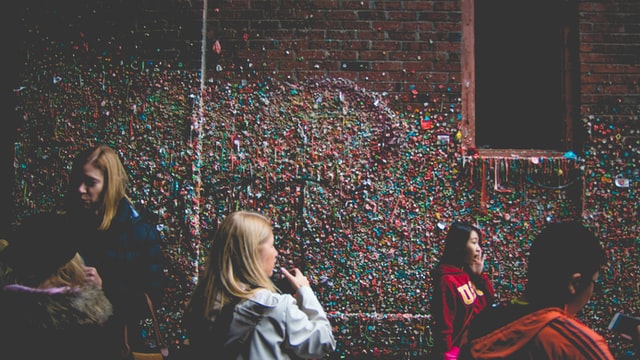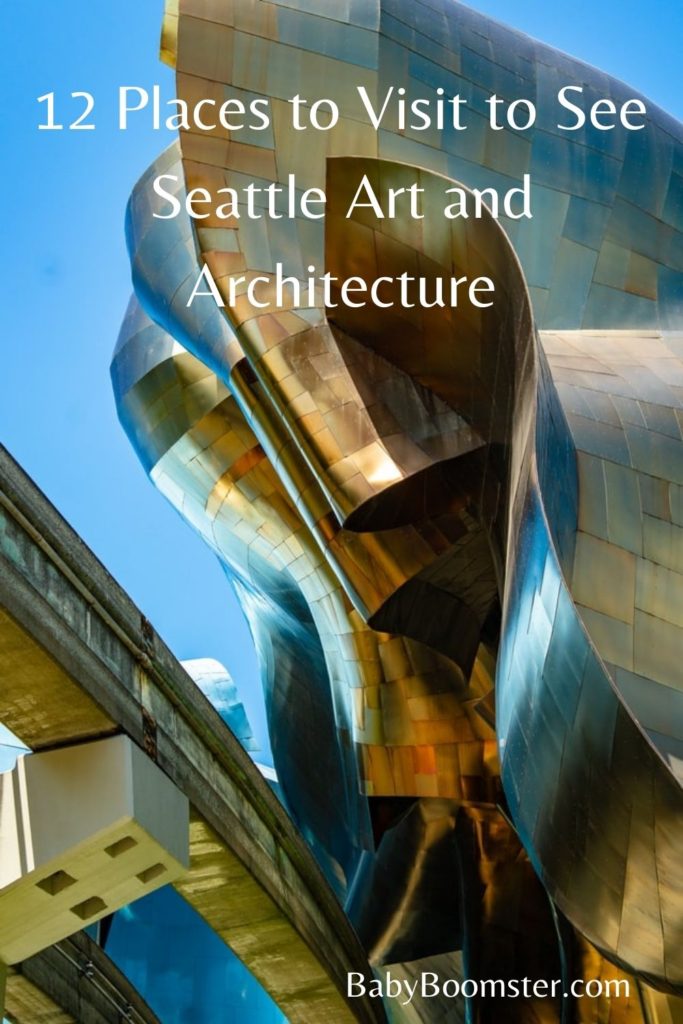You can learn a lot about a city through its art and its architecture. Seattle is known for its modernism like the iconic Space Needle. But, it also had a rough and tumble past with tales of rabble-rousers, gold miners, loggers, and fishermen.
Among its towering skyscrapers, you’ll find eclectic museums, flamboyant public sculptures, street art, and serene gardens.
Downtown Seattle is a walking city so if you want to get your steps in, drop your luggage off at a public storage service to lighten your load, put on your walking shoes, and prepare to be dazzled.
1. Seattle Art Museum
The Seattle Art Museum, known as SAM, is the major center for world-class visual arts in the Pacific Northwest. Its exhibitions and galleries feature paintings and exhibits from a wide array of genres that include folk art, classical art, sculptures, and mosaics.
SAM also manages the Seattle Asian Art Museum and the Olympic Sculpture Park, which are located in other parts of downtown Seattle.
You’ll find the Seattle Art Museum at 1300 First AVE, Seattle, WA 98101
2. Asian Art Museum
Seattle has a strong Pacific Rim and Asian influence because it’s a gateway to the Pacific Ocean. You can see art and architecture that was inspired by Chinese immigrants who came to the Northwest to build railroads, work in canneries, mines, logging, or as domestic help. The Asian community has played prominent roles in Seattle’s history and today it is home to a number of Korean, Vietnamese, and other South and South Asian immigrants.
The Seattle Asian Art Museum celebrates those cultures and displays the work of many Japanese, Chinese, Indian, and Korean artists in its extensive collection.
1400 East Prospect Street, SEATTLE, WA 98112
3. Olympic Sculpture Park
In 2007, Jon Shirley opened the 9-acre outdoor Olympic Sculpture Park, by the waterfront to provide a space for artists to showcase their work to the public. There, you can view permanent and temporary modern/contemporary sculpture outside as well as in the indoor pavilion.
2901 Western Avenue, Seattle, WA 98121.
4. Museum of Pop Culture
The performing arts have a special place in Seattle. Over the decades, numerous Seattleites have made their mark on the world. Jimi Hendrix, Chris Cornell, Judy Collins, Kurt Cobain, Sir Mix-a-Lot, Heart to name a few.
The Museum of Pop Culture is a tribute to these artists and has numerous contemporary art exhibits. The building was designed by Frank O. Gehry and is a sight in itself to behold. He also designed the Disney Concert Hall in Los Angeles and the Guggenheim Museum in Bilbao, Spain among other works.
325 5th Ave N, Seattle, WA 98109
5. Seattle Center
Decades ago, World Fairs were much more commonplace. Cities like Paris, New York, and Seattle have hosted them in the past. Artists and engineers worked together to create something truly amazing to show the rest of the world.
That’s why Seattle Center was built in 1962. Even now, the center remains a hub for art, entertainment, and education. It’s also the home of the iconic Space Needle.
305 Harrison St, Seattle, WA 98109
6. Space Needle
The Space Needle is a 605-foot tower that you see in almost every postcard of Seattle. It was once the tallest building West of the Mississippi and offers spectacular views from the top of its observation tower.
It was built specifically for the 1962 World Fair and was designed by Edward E. Carlson and John Graham, Jr. You can head up to the observation tower and enjoy a breathtaking 360-degree rotating view of the city while as you savor Northwest Cuisine at the SkyCity restaurant.
400 Broad St, Seattle, WA 98109
7. Chihuly Garden & Glass
If you want to see something out of the ordinary and thoroughly stunning, visit Chihuly Garden & Glass. This art center showcases the work of Dale Chihuly, Seattle’s most prominent glass sculptor. His imaginative and ethereal glass art pieces and wall art have a dream-like quality that will transport you to another world. Chihuly’s extraordinary work is displayed in The Garden, The Glasshouse, and in interior exhibits.
305 Harrison St, Seattle, WA 98109
8. Fremont Troll
When most folks hear the word troll these days, they might think of someone posting mean comments online. But trolls are also nasty bridge-dwelling creatures that you read about in fairy tales. They aren’t real, right? Well, you may change your mind when you pay a visit to the Fremont Troll.
If you wander underneath the Aurora Bridge, also known as the George Washington Memorial Bridge, you’ll find a massive troll. It’s the creation of local artists Steve Badanes, Will Martin, Donna Walter, and Ross Whitehead who entered an art competition in 1989 to help clean up the area under the bridge once inhabited by junkies and drug dealers.
According to legend, trolls turn to stone when they’re asleep. Who’s to say the Fremont Troll won’t wake up one day?
N 36th St at Troll Ave N, Seattle, WA 98103
9. The Market Theatre Gum Wall
Art comes in many different forms, especially in Seattle. If a dormant troll is considered to be a work of art then you can safely say that Seattlites are open-minded when it comes to creativity.
The Market Gum Wall is a perfect example. It’s an old brick wall with pieces of chewing gum plastered all over it. Kind of gross, right? But, it’s a popular Seattle sightseeing stop in Post Alley under Pike Place Market and next to the box office for the Market Theatre.
It came to be when patrons of a theatre production company stuck their gum to the walls and inserted coins in the blobs. After frustrated theatre workers worked in vain to scrape it off, patrons kept leaving their chewed-up gum there and it quickly became a tourist attraction, albeit a germy one. In fact, in 2009. the Market Gum Wall was named one of the top 5 germiest sightseeing stops in the world second only to the Blarney Stone.
1428 Post Alley, Seattle, WA 98101
10. Kubota Garden
Mother Nature is one of the greatest and most innovative artists of all time. Seattle’s trees, mountain ranges, fields, and green spaces are genuine artistic masterpieces in themselves.
Kubota Garden, in South Seattle near Ranier Beach, is a gorgeous 20-acre public garden that features American and Japanese plant species. Nestled between gentle hills and valleys you can find streams, waterfalls, and ponds in stunning Japanese-inspired landscapes as well as native Northwest plants.
Master landscaper Fujitaro Kubota began building the garden in 1927 and in 1987, it was declared an historic landmark.
9817 55th Ave S, Seattle, WA 98118
11. Smith Tower
When it comes to Seattle art and architecture you don’t want to forget the city’s past. The Smith Tower is nearly 500 feet tall and was constructed in 1914. It’s a shining example of Neoclassical design. Smith Tower was the first skyscraper to be built in Seattle and was the tallest building west of the Mississippi River.
The open-air observatory deck will give you a breathtaking 360-degree view of Seattle and the areas that surround it. While you are up there, enjoy have a classic cocktail at their speakeasy-style bar along with appetizers. Or take a trip back into the past at the Observatory Experience. The ground floor features historical exhibits and you can purchases souvenirs and gifts.
506 Second Avenue, Seattle, Washington 98104
12. Iron Pergola and Totem Pole at Pioneer Square
Pioneer Square is where the city of Seattle started and is considered to be its first neighborhood and now its historic district. It’s best known for it’s Renaissance Revival buildings and is a gathering place for artists, shoppers, and diners.
The Iron Pergola is a Victorian-style cast iron and glass structure at Pioneer Square that was built in 1909 to shelter cable car passengers. It was designed by Julian F. Everett as a comfort station that once had elegant underground bathrooms.
The Pergola has been restored countless times but still reminds us of days gone by.
The Pioneer (Seattle) Totem Pole is also known historically as the Chief-of-All-Women pole. It was carved in 1790 by the Tlingit tribe and was originally located on Tongass Island, Alaska. In 1899, it was relocated and raised in Pioneer Square but was defaced and restored several times. An arsonist torched it in 1938 and it was deemed too damaged to save. A replica was installed at Pioneer Square in 1940 and it is now designated as a National Historic Landmark standing 49 feet 8 inches tall and is a must-see example of Indigenous art.
Pioneer Square is located at 614 First Ave, Seattle, WA 98104
Do you plan to visit Seattle in the future?
Find out what to do in Seattle and where to book your hotel stay here.
Please share this image on Pinterest:







Leave a comment and tell us what you think